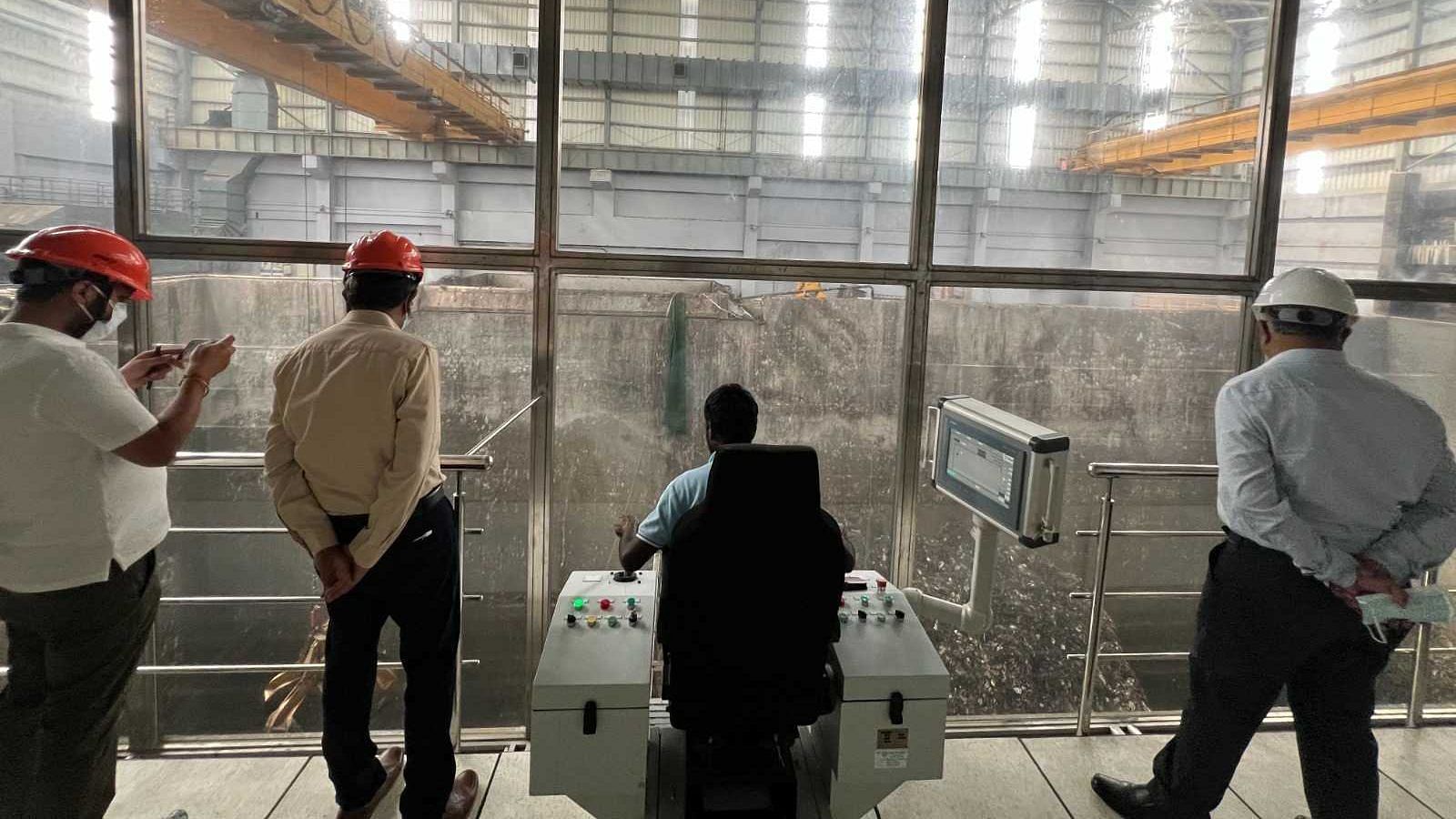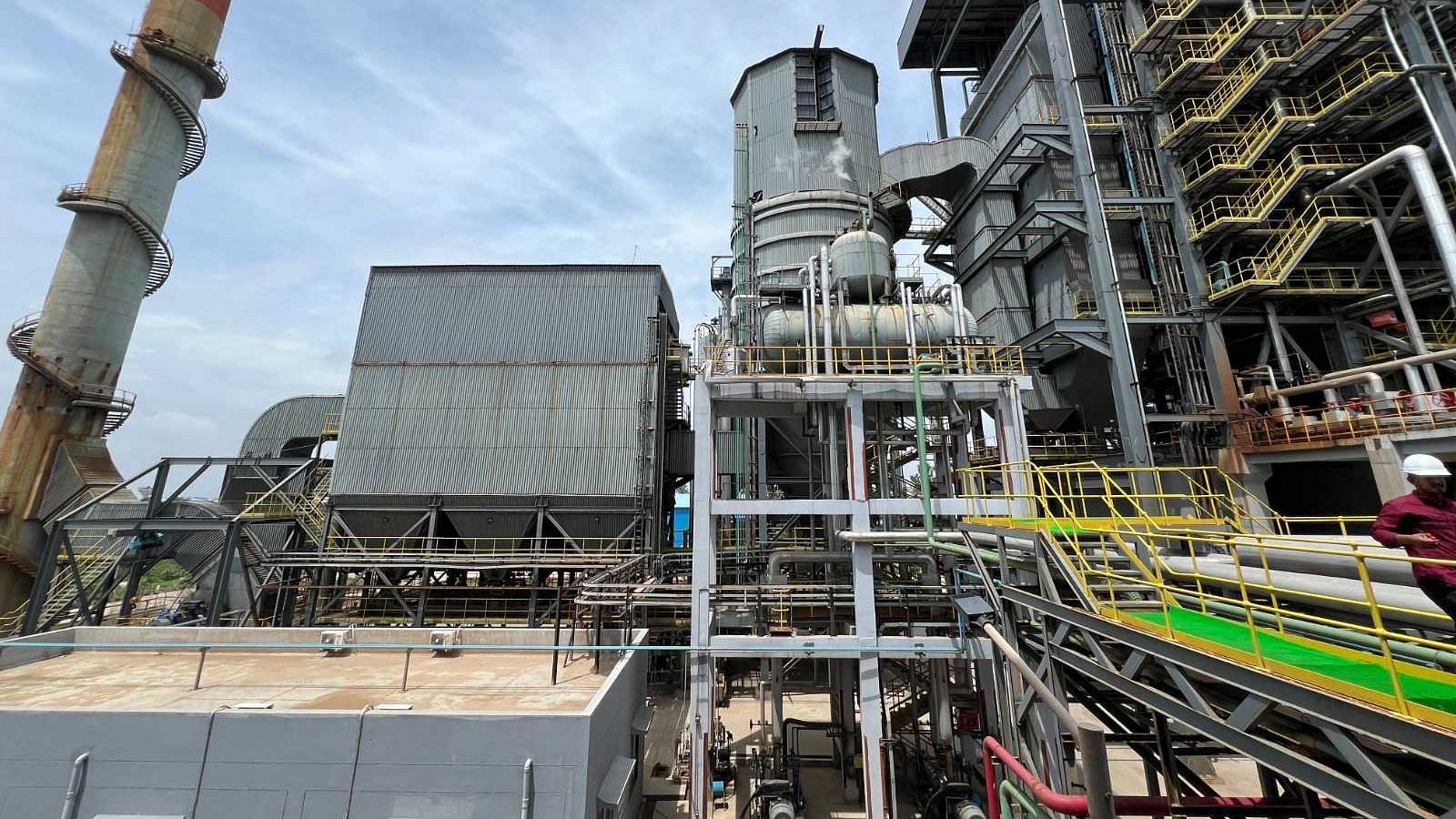Hyderabad: Looking out a glass window from the third floor of a factory, a man uses a joystick to manoeuvre a garbage-loaded claw outside the building. He moves the claw to a massive pit equivalent to three storeys of a building, capable of holding 200,000 kilos of non-decomposable waste.
Many such garbage pits, covered with black tarps, lie outside the factory in Hyderabad’s Dundigal. Inside the factory are thousands of electronics products, tonnes of precious metals, large magnets and rotating drums, hundreds of meters of pipes to clean gases, and a giant incinerator.
The factory is part of a private collaborative effort towards a circular trash economy. As much material as possible is reclaimed for recycling and reuse. The hardier, industrial-grade plastic and precious metals in electronics waste are recovered. The rest is disposed of in processes that add as little waste as possible to the environment.
The launch of the initiative in Hyderabad was on 10 September. It followed a detailed report that the non-profit Marico Innovation Foundation had released about plastic innovators in collaboration with the Indian Institute of Science (IISc) and Praxis Global Alliance.
“Plastic has been the reason for the success of many of our products, such as Parachute hair oil,” explained Harsh Mariwala, chairperson of Marico, which has launched the project with Re Sustainability and Sharrp Ventures. “Innovations in plastic gave us market share growth. When I would explain that in talks I gave, people would ask me, ‘You benefitted so much from plastics, but what kind of harm have you done to the environment?’. I would never have an answer.”
The project aims to recycle 32,000 tonnes of plastic, produce 9,000 tonnes of material for reuse and reduce carbon dioxide emissions by 15,000 tonnes annually.

Waste segregation into solid & wet, energy generation
As many as 10,000 sanitation workers across the city are involved in trash collection and segregation. Besides trucks, the city has at least 4,500 container autos with specially fitted QR codes to carry trash. Nearly 500 of them usually reach each of the segregation-and-transfer facilities daily.
At the transfer stations, refuse with calorific value and organic produce is separated and stored away for energy generation. Every day, nearly 4,000 metric tonnes of waste is left after that. This waste is compacted into cylinders and sent to a different facility, where industrial-scale equipment is used for the final sorting in automated processes. Rotating drums called trommels spin the trash, sorting it by weight, while a ballistic separator takes the heavy, wet waste away from the lighter, dry waste.
Nearly twenty percent of this waste has no calorific value, with no reclamation possible. So, it ends up in the landfills. But the remaining constitute what ultimately provides energy, precious metals, reclaimed plastic and silica ash for sand enrichment.
The segregated trash is put into vehicles with specific QR codes. The wet waste goes for processing at the Dundigal Waste-To-Energy Plant for power and compressed biogas generation. It goes from a drying zone to a combustion zone to a burnout zone.
Every day, chemical processes at the plant convert thousands of tonnes of wet waste into energy, with the power corporation purchasing it directly. The compressed biogas generated from wet waste is used as an alternative fuel for cement production.
Incineration of non-decomposable waste
The gigantic garbage pit where the man was directing the claw contained solid waste material that had no energy value and would not decompose, say fabric.
Such material is incinerated in a giant furnace chamber fitted with cameras and viewing windows of reinforced glass. It converts the waste to fly ash and bottom ash, which can replace sand. To minimise carbon emissions, the gases released in all the processes are treated chemically in colourful, futuristic-looking pollution control system pipes, which are visible over the facade of the building. Engineers at the facility pointed out how the smoke (flue gas) rising from the tallest tower looked clear.
Mariwala said that more facilities and smaller laboratories under construction for the pilot will be ready in another six months. One of the questions that requires addressing is how to lower the cost of recycled plastic, which, due to the processing involved, is more expensive than virgin plastic, he added.
“By increasing the supply of high-quality recycled materials and creating sustainable waste management practices, we are setting a new standard for innovation and responsibility in the industry,” he said.
E-waste facility & landfill
The insides of the e-waste facility look like an industrial cathedral, with ceilings three to four storeys high.

There are various rooms labelled as refineries, refurbishment and maintenance bays, chemical rooms, data wiping rooms, and more. Some engineers hunch over black-coloured laptops, which have been discarded by industries across the country, opening and separating parts. Others in the inspection area have identified the laptops that can be salvaged entirely or partially, down to the chip level. These will be refurbished and are first wiped clean in the data wiping room.
Electronic products use metals such as gold, silver, copper, and palladium on circuit boards. In the first step towards recovering these metals, the large-sized components of the products are broken into smaller pieces, almost as if passed through a blender. Next, large magnets separate the metals from the plastic in these pieces at high temperatures. All the metals are melted to form a molten alloy, which, in turn, is cooled into bars. These are then chemically processed to separate the different metals.
Outside this e-waste facility is the landfill, where black tarps cover the discarded waste, which cannot be recovered or decomposed. The government land is leased out by ReSustainability, which uses reagents and other chemicals to make the refuse less polluting.
The trash is buried in specialised containers with protective layers to prevent methane emissions. They are also constantly monitored to curb leeching or leaking into the environment.
Next year, the facility plans to begin lithium ion processing for discarded batteries.
Harsh Mariwala told ThePrint, “I am looking forward to the successful prototype of this project over the next one to two years. When that works, I have no doubt that we’ll be able to attract other industries and scale this up to a national level.”
(Edited by Madhurita Goswami)
Also read: Yet to pay Rs 1,096 cr compensation for failure to manage legacy waste, Punjab’s a repeat offender
